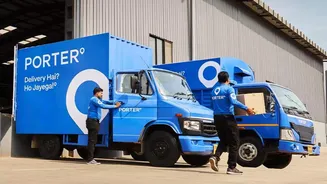A man recently shared how his bank handled a large transaction late at night, showing just how strict and detailed the banking system’s security checks are. His post has sparked interest online, especially
among people who didn’t know that even high-value account holders face similar limits and reviews.
He wrote on X (formerly Twitter) that even for private banking customers, banks do not allow Real-Time Gross Settlement (RTGS) transfers beyond Rs 1 crore in a single day. If anyone needs to transfer a higher amount, a banker personally visits, fills out a request form, and gets it authorised by the branch manager.
The bank’s risk management team then calls the customer to confirm that the transaction is genuine.
A Late-Night RTGS and a Quick Bank Call
The man shared that one night, around 1 am, he made an RTGS transfer within his daily limit. “Within 2 minutes, the risk department from Mumbai called, put the RTGS on hold, and asked a lot of questions, whether it was I who was doing it voluntarily at that time of night and not under coercion,” he wrote.
He said the bank staff verified several details and even reviewed his past transactions before clearing it. “Next morning I saw RTGS done at around 5 am, 4 hours after I initiated the transaction,” he added.
Despite the delay, he appreciated the process. “Do I get upset with banks for having so many checks and balances in dealing with my own money? Absolutely not. I feel more safe,” he said. He added that such measures are essential for protecting customers from fraud or coercion.
Check his post here:
I saw some exchanges regarding withdrawal limits from a brokerage. Even if you’re a private banking customer, a bank doesn’t allow you to do RTGS of more than Rs.1 crore in a day. If you want to do more than that amount, a banker would come home, fill-up the application, get…
— Muthukrishnan Dhandapani (@dmuthuk) November 4, 2025
For those wondering how withdrawals work in regular cases, here is a quick look at the different ways people can access their money.
How You Can Withdraw Cash From an ATM
The simplest way to withdraw cash is through an ATM using your debit or credit card. Most banks allow Rs 10,000 to Rs 25,000 per transaction and up to Rs 1 lakh per day, depending on the account type.
To withdraw, you insert your card, enter your PIN, select the “withdraw cash” option, choose the amount, and collect your cash and receipt. If you exceed the limit, your transaction may be declined or delayed.
Withdrawing Cash Without a Card
Many banks now offer cardless withdrawals using mobile apps and UPI. This feature lets you withdraw cash even if you forget your debit card.
You can open your bank’s app, select “Cardless Cash Withdrawal” or “UPI Cash,” choose the amount, and generate a one-time password (OTP) or UPI code.
At the ATM, select “Cardless Withdrawal,” enter the code and OTP, and collect the cash. This method is available across most major banks and supported ATMs nationwide.
Cash Withdrawal at a Bank Branch
For larger amounts, visiting the bank is safer. You will need to fill out a withdrawal slip, sign it, and show valid ID proof. For withdrawals above Rs 50,000, some banks ask for a PAN card copy. The teller may take longer for bigger sums since the bank must ensure cash availability.
If your account is in another branch or city, you might face limits unless you notify the bank in advance.
Other Options: Cheques and PoS Withdrawals
Cash can also be withdrawn through cheques. You can either issue a self-cheque for your own withdrawal or authorise someone else with an “account payee” cheque. This method is useful for amounts beyond ATM limits.
Some retail stores, supermarkets, and petrol pumps also let you withdraw small amounts of cash at their Point-of-Sale (PoS) terminals using debit cards. However, the maximum limit is usually Rs 1,000 for rural areas and Rs 2,000 for urban areas.
What Happens When You Need to Withdraw in Crores
Withdrawing more than Rs 1 crore in cash from a bank is not a routine process. You must inform the branch in advance so they can arrange the funds and conduct regulatory checks. The bank will also ask for identification documents, income tax proof, and the reason for such a large withdrawal.
As per tax rules, banks deduct TDS under Section 194N once total withdrawals cross Rs 1 crore in a financial year. The rate is 2 per cent if you have filed your ITRs, but it can go up to 5 per cent if you haven’t. Such withdrawals are done only at the branch counter, not at ATMs or PoS.
Banks usually take a few days to process the request after getting clearance from their risk and compliance teams. For large payments, digital transfers like NEFT, RTGS, or Demand Drafts are recommended since they are safer and traceable.
















